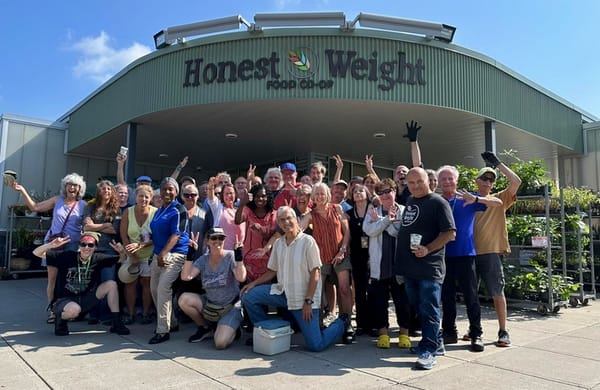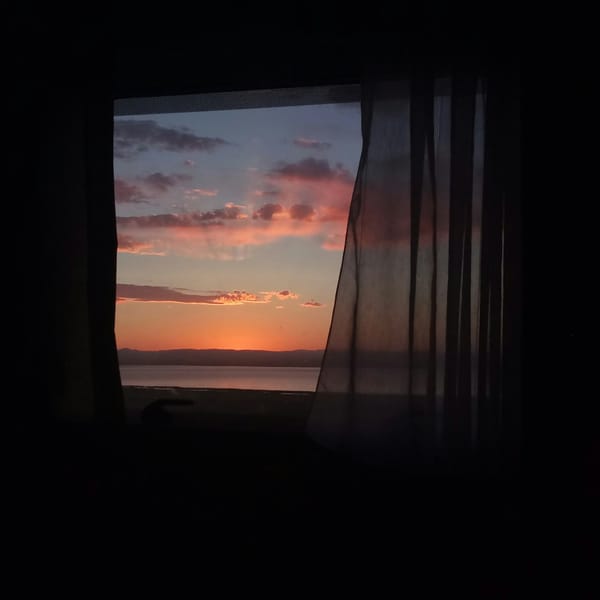Hauntings

"I know that I will always be haunted by the larger, vaguely remembered reality of the circumstances surrounding my childhood" George Takei
In How the State Creates Enemies (Post #13, June 13) I discussed They Called Us Enemy, George Takei's graphic memoir as I wrote about concentration camp history and the current regime's ramping up of detentions and renditions. The internment of Japanese-Americans, many of whom were U.S. citizens, required a massive government effort, as 120,000 were removed from their homes (and orphans were even removed from orphanages). Takei and his family were removed first to the Santa Anita racetracks, where they stayed in horse stalls that still smelled of manure, and had to use outdoor public showers.
After several months, Takei's family was moved across the country, to Camp Rohwer, in Arkansas.

"We were loaded onto trains headed east, but not before being 'tagged' to keep track of us like cattle" Takei (36).

Armed soldiers were stationed on the train cars, and during the long journey they ordered the detainees to close the window shades whenever they rolled into a town: "We were not to be seen by the townspeople" (40).
Between Camp Rohwer and Tule Lake camps, the Takei family spent 4 years of their lives imprisoned. When, as a teenager, he went looking for information about their experience, Takei couldn't find it in his textbooks. It was as if, again, they were "not to be seen."
I was reminded of Takei's phrase this week, as I watched news coming out of Chicago, where communities are struggling to prevent their neighbors from being "disappeared" by ICE. Heather Cox Richardson's letter for October 29 also reported that, now, "ICE is claiming that the shutdown means it no longer has any legal obligation to permit congressional oversight visits to its detention facilities."
Attempts to prevent or hinder those visits had already been made, well before the government shutdown. It seems there is a dual operation going on, in which the capture of "suspects" is highly visible, but what happens afterwards is kept undercover. Meanwhile, there are displays of martial theater. Some of which take cues from very specific sources.
I noticed it when I saw some photos this week of Greg Bovino.
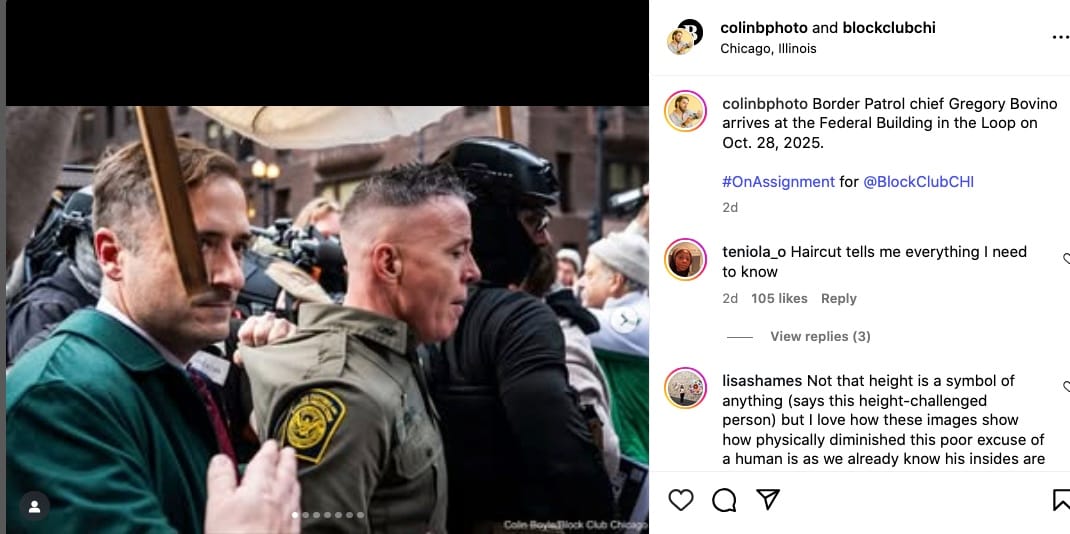

Border Patrol Sector Chief Greg Bovino and SS Gruppenführer August Heissmeyer (US National Archive)
Then I saw another pair of photos in Andrea Pitzer's latest piece, aptly named, "When Bad Things Get Worse." She introduced her post on Blue Sky this way: "I wrote about how Border Patrol taking the lead in immigration operations mirrors a shift that happens often in concentration camp regimes, including Nazi Germany, and some ways we can respond." I'll share some urgent takeaways from her article, but first, a couple more photos.
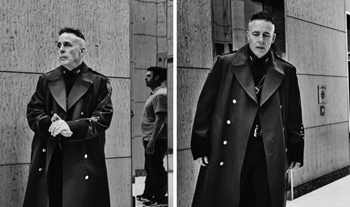
I got curious, and went looking for a predecessor for those images of Bovino captured by photographer Mustafa Hussain, and found this:
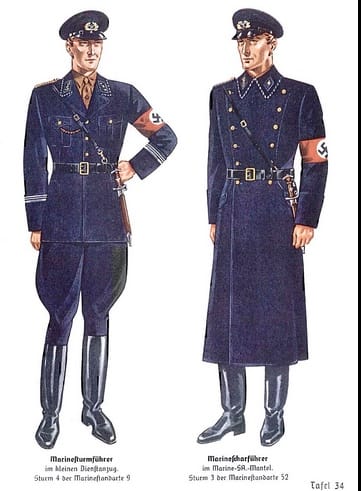
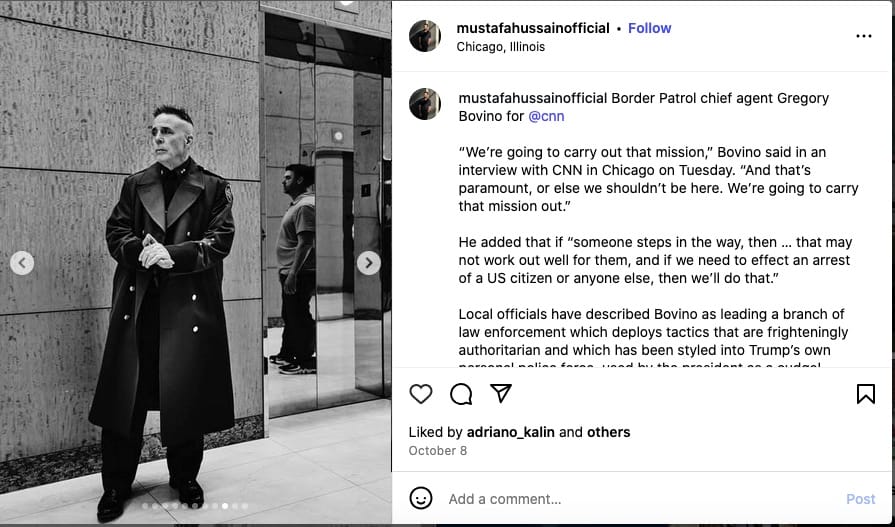
Left, 1937 3rd Reich Handbook, SA Marine Uniform (US National Archive). Right, Greg Bovino in Chicago
Andrea Pitzer's discussion of the shakeups this week at ICE is a must-read. It helped me better understand the larger contours of the barrage of news and events. Too often we experience what's happening as a jumble of isolated events—we are too busy and stressed to understand their import. Many of us lack the historic knowledge and political understandings to analyze their implications. Pitzer's deep research into the history of concentration camps makes her perspective worth heeding.
Pitzer explains the differences—in purview and methodology—between Immigration and Customs Enforcement and Customs and Border Protection. I'm at risk of oversimplifying here, so do please go to the source. But generally speaking, ICE has tended to carry out more specifically-targeted arrests of suspected criminals, while CBP is casting a wider, more indiscriminate net. Pitzer considers what this may mean in light of recent news of "a purge" of ICE officials, one that appears to be a move to intensify CBP-style tactics.
"The current purge of ICE is said to be in response to what the White House sees as low apprehension and deportation numbers compared to the quota of 3,000 a day set by Stephen Miller," Pitzer explains. "If Tom Homan won't adopt the approach that DHS wants, the story seems to go, then Border Patrol is willing to take that challenge on themselves."
It looks to me as though the Nazi-coded/coated Bovino is being put forward as the face of that approach.
The quest to meet Miller's outrageous quotas seems to be driving this purge. Pitzer finds it instructive to consider another purge, within the Nazi Party in 1934, known as the the Night of Long Knives. In this purge, Hitler's SS, led by Himmler, executed at least 90 SA members and leaders, including the powerful Chief of Staff, Ernst Röhm.
"At that point" she explains, "there were two visions of a German future. One focused on bringing the extrajudicial methods used to secure power completely under the control of existing institutions since the Nazis had gained control of everything," and the other "focused on maintaining a national state of ongoing terror. Mass detention through extrajudicial means—concentration camps—lay at the heart of that terror." The latter vision was held, notably, by Himmler.
That purge reflected similar tensions within the regime. As the Holocaust Encyclopedia describes it, "the SA was not satisfied with what its leaders perceived to be a slowing pace of the Nazi revolution. By the late winter and spring of 1934, their outlook threatened to split the Nazi-Nationalist coalition."
Himmler later recalled that action as a kind of loyalty test which SS members had passed, one that meant they were capable of carrying out the Holocaust. In his 1943 speech to SS generals, he refers to it as a "difficult chapter," in which the SS was to "carry out the task that we were ordered to perform and to stand comrades who had gone astray against the wall and shoot them."
"Every single one of us shuddered," he continues, "nevertheless each of us understood clearly that he would do it the next time if it were ordered and if it were necessary. I mean here the evacuation of the Jews, the annihilation of the Jewish people." (Röhm Purge, encyclopedia.ushmm.org).
I'm wondering if this is speech is a "retcon" of history by Himmler, nearly ten years later. Because Pitzer notes that the concentration camp system at the beginning of Hitler's regime "were largely like those in other places around the world." But eventually, "the Himmler faction won out. In the months and years that followed, the Nazi concentration camp system devolved again and again into larger and more abominable forms—ones that would have been impossible to imagine in 1934."
Pitzer urges us to avoid the failure of imagination that might sentence us to a dangerous path in our own time. She warns, "my sense is that with Border Patrol taking the lead on U.S. immigration enforcement, we're going to see a worsening of daily life for several parts of the country," and "a rapid expansion of impromptu facilities, more porous categories for apprehension, and more aggressive tactics applied indiscriminately to those who stand up for the rights of anyone targeted."
Any one of these possibilities could merit an entire article of it's own. Pitzer also makes an important point about the many Americans whose privilege has sheltered them in the past: Americans whose lives haven't already been touched by agencies charged with immigration enforcement—even those historically worried about the effects of discrimination and police violence—have, in many cases, failed to imagine how bad things already were for those who had come in closer contact with law enforcement. And now the national failure to end the arbitrary violence sees it being visited on more and more people across the country"(emphasis mine).
I realize that reading this may induce fear, despair, and inaction. But Pitzer's closing point is that we still have the power to act against this. She argues that we especially need to turn our attention to preventing spaces in our communities from being turned into "ad hoc detention solutions." By working with our representatives and as many other local level groups as possible, we need to "deny access" to "the types of locations we've seen turned into improvised prisons in the past elsewhere: stadiums, schools, concert venues, civic centers, horseracing tracks, stables, hotels, motels, campgrounds, and even nightclubs and community centers."
This kind of work will take time and steady pressure, even while the regime is moving quickly and provocatively. In Heather Cox Richardson's October 30 letter, she notes that arrests currently stand at "about 900 a day" and that "tripling arrests will likely bring pushback." This letter is also an important read, as Cox Richardson describes "signs the administration is not just trying to give the impression that Americans are rioting, but is trying to push them to do so."
She highlights reports that the "National Guard in all the states, U.S. territories, and the District of Columbia" have been ordered "to form 'quick reaction forces' trained in 'riot control.' Most states are required to train 500 National Guard personnel, for a total nationwide of 23,500. The forces are supposed to be in place by January 1, 2026."
And a good question to ask is, why, according to Cox Richardson's summary from a report by The Atlantic, have Miller, Noem, Hegseth, and Rubio "moved onto military bases"?
This is a lot to digest. As exhausting as it is, we need to be vigilant, to be alert to the patterns that are emerging, rather than regarding incidents as isolated events. There are clues scattered everywhere if we know how to identify them. I'll leave you with one more. It's a piece of the pattern that harks back to the relocation of the Takei family and 120,000 others, as well as to the facilities for the disabled that I discussed in my post of June 27, Hans Asperger and Nazi Psychiatry: Diagnosing History. Other plans to remove/disappear people are afoot:



